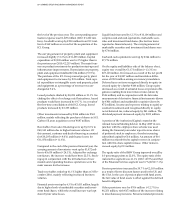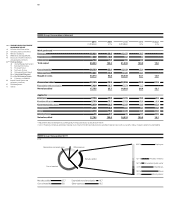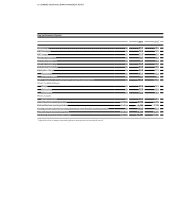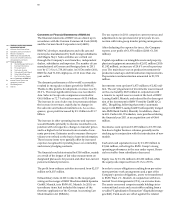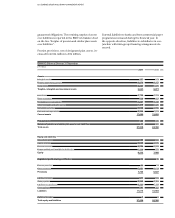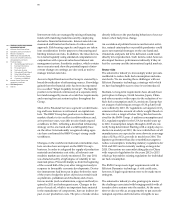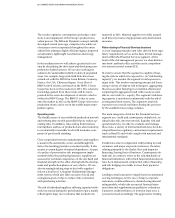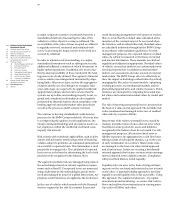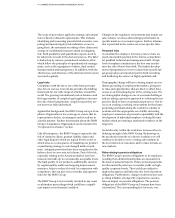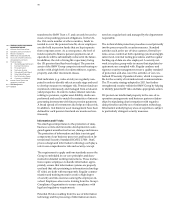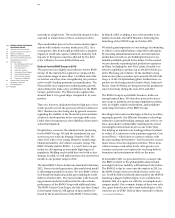BMW 2011 Annual Report Download - page 66
Download and view the complete annual report
Please find page 66 of the 2011 BMW annual report below. You can navigate through the pages in the report by either clicking on the pages listed below, or by using the keyword search tool below to find specific information within the annual report.
66
18 COMBINED GROUP AND COMPANY
MANAGEMENT REPORT
18 A Review of the Financial Year
20 General Economic Environment
24 Review of Operations
43 BMW Stock and Capital Market
46 Disclosures relevant for takeovers
and explanatory comments
49 Financial Analysis
49 Internal Management System
51 Earnings Performance
53 Financial Position
56 Net Assets Position
59 Subsequent Events Report
59 Value Added Statement
61 Key Performance Figures
62 Comments on BMW AG
66 Internal Control System and
explanatory comments
67 Risk Management
73 Outlook
The internal control system in place throughout the
BMW Group is aimed at ensuring the effectiveness of
operations. It makes an important contribution towards
ensuring compliance with the laws that apply to the
BMW Group as well as providing assurance on the pro-
priety and reliability of internal and external financial
reporting. The internal control system is therefore a
sig-
nificant factor in the management of process risks. The
principal features of the internal control system and the
risk management system, as far as they relate to individ-
ual entity and Group financial reporting processes, are
described below.
Information and communication
One component of the internal control system is that of
“Information and Communication”. It ensures that all
the information needed to achieve the objectives set for
the internal control system is made available to those
responsible in an appropriate and timely manner. The re-
quirements
relating to the provision of information rele-
vant
for financial reporting at the level of BMW AG, other
consolidated Group entities and the BMW Group are
primarily set out in organisational manuals, in guidelines
covering internal and external financial reporting issues
and in accounting manuals. These instructions, which
can be accessed at all levels via the BMW Group’s intranet
system, provide the framework for ensuring that the rele-
vant rules are applied consistently throughout the Group.
The quality and relevance of these instructions is
en-
sured by regular review as well as by continuous commu-
nication
between the relevant departments.
Organisational measures
All financial reporting processes (including Group finan-
cial
reporting processes) are structured in organisational
terms in accordance with the principle of segregation
of duties. In combination with the rigorous application of
the principle of dual control, these structures allow errors
to be identified at an early stage and prevent potential
wrongdoing. Regular comparison of internal forecasts and
external financial reports improves the quality of finan-
cial reporting. The internal audit department serves as a
process-independent function, testing and assessing
the effectiveness of the internal control system and pro-
posing improvements when appropriate.
Controls
Extensive controls are carried out by management in all
financial reporting processes at an individual entity and
Group level, thus ensuring that legal requirements and
internal guidelines are complied with and that all busi-
ness transactions are properly executed. Controls are
also carried out with the aid of IT applications, thus re-
ducing the incidence of process risks.
IT authorisations
All IT applications used in financial reporting processes
throughout the BMW Group are subject to access restric-
tions, allowing only authorised persons to gain access
to systems and data in a controlled environment. Access
authorisations are allocated on the basis of the nature
of the duties to be performed. In addition, IT processes
are designed and authorisations allocated using the dual
control principle, as a result of which, for instance, re-
quests cannot be submitted and approved by the same
person.
Internal control training for employees
All employees are appropriately trained to carry out their
duties and kept informed of any changes in regulations
or processes that affect them. Managers and staff also
have access to detailed best-practice descriptions relating
to risks and controls in the various processes, thus in-
creasing risk awareness at all levels. As a consequence,
the internal control system can be evaluated regularly and
further improved as necessary. Employees can, at any
time and independently, deepen their understanding of
control methods and design using an information plat-
form that is accessible throughout the entire Group.
Evaluating the effectiveness of the internal
control system
Responsibilities for ensuring the effectiveness of the
internal control system in relation to individual entity
and Group financial reporting processes are clearly de-
fined and allocated to the relevant managers and pro-
cess owners. The BMW Group assesses the design and
effectiveness of the internal control system on the basis
of internal review procedures (e.g. management self-
audits, internal audit findings). Audits performed at
regular intervals show that the internal control system in
place throughout the BMW Group is both appropriate
and effective. Continuous revision and further
develop-
ment of the internal control system ensures its continued
effectiveness. Group entities are required to confirm
regularly as part of their reporting duties that the in-
ternal control system is functioning properly. Effective
measures are implemented whenever weaknesses are
identified and reported.
Internal Control System* and explanatory comments
* Disclosures pursuant to § 289 (5) HGB and § 315 (2) no. 5 HGB



